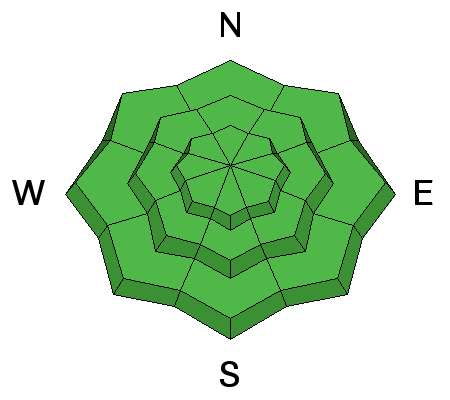25th Annual Black Diamond Fall Fundraising Party
Thursday, September 13; 6:00-10:00 PM; Black Diamond Parking Lot

25th Annual Black Diamond Fall Fundraising Party
Thursday, September 13; 6:00-10:00 PM; Black Diamond Parking Lot
| Advisory: Ogden Area Mountains | Issued by Evelyn Lees for Tuesday - April 10, 2018 - 7:00am |
|---|
 |
special announcement The UAC Marketplace is still open. Our online marketplace still has deals on skis, packs, airbag packs, beacons, snowshoes, soft goods and much more. The last regular early morning forecast will be Sunday, April 17th. We will then do intermittent forecast through May 29th. The Wilderness Medicine Program at the University of Utah is surveying the knowledge of both regular and occasional backcountry users. Please provide your input through this survey. https://www.surveymonkey.com/r/AvalancheSafetySkillsSurvey |
 |
current conditions Skies are mostly clear, and temperatures are warm – in the thirties at almost all elevations. The winds have shifted to the southwest and are light, averaging 5 to10 mph at the mid elevations, and 15 to 25 mph on the highest peaks. Most slopes will be firm this morning, with reports of excellent spring skiing as they soften into corn. Sadly, the trails heads in the Ogden area mountains melted out long ago. It was a tough winter for low elevations snow. |
 |
recent activity No new avalanche activity reported from the Ogden area mountains, no new backcountry observations. |
| type | aspect/elevation | characteristics |
|---|


|


|

LIKELIHOOD
 LIKELY
UNLIKELY
SIZE
 LARGE
SMALL
TREND
 INCREASING DANGER
SAME
DECREASING DANGER
|
|
description
Mountain travel always has risks. Slide for life conditions exist on the hard, icy slopes early in the day. Wet loose sluffs may be triggered on steep slopes as the day heats up - once the snow get wet, sloppy or punchy where you are, it's time to head to a cooler aspect or lower angle slopes. Wind slabs: there may be a few wind drifts along the highest ridge lines. Wet slabs and glide avalanches probably occurred during the rain on Saturday. The issue and the weak layers are not gone, rather they are currently dormant and avalanching on these deeper weak layers is unlikely today. If the frozen crust becomes punchy where you are, with wet snow beneath, it's time to move off steep slopes. |
 |
weather Another beautiful morning, though the day will rapidly get too hot. Clear skies this morning, with high thin clouds moving in this afternoon. Temperatures will warm to near 60°F at 8,000’ and into the 40s along the highest ridge lines. The southwesterly winds will average 5 to 15 mph at the mid elevations, and up to 35 mph at the upper elevations (like Mount Ogden) this afternoon. A quick moving cold front may drop a trace to an inch of snow overnight, with a more significant storm system expected Thursday into Friday, with much colder temperatures and potentially heavy snowfall. Could be a great way to end the season. |
| general announcements CLICK HERE FOR MORE GENERAL INFO AND FAQ The UAC has new support programs with Outdoor Research and Darn Tough. Support the UAC through your daily shopping. When you shop at Smith's, or online at Outdoor Research, REI, Backcountry.com, Darn Tough, Patagonia, NRS, Amazon, eBay a portion of your purchase will be donated to the FUAC. See our Donate Page for more details on how you can support the UAC when you shop. Benefit the Utah Avalanche Center when you buy or sell on eBay - set the Utah Avalanche Center as a favorite non-profit in your eBay account here and click on eBay gives when you buy or sell. You can choose to have your seller fees donated to the UAC, which doesn't cost you a penny This information does not apply to developed ski areas or highways where avalanche control is normally done. This advisory is from the U.S.D.A. Forest Service, which is solely responsible for its content. This advisory describes general avalanche conditions and local variations always occur. |